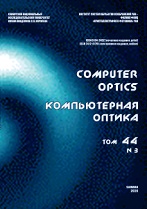|
This article is cited in 4 scientific papers (total in 4 papers)
NUMERICAL METHODS AND DATA ANALYSIS
Identification of the acoustic signal models of audio exchange systems under conditions of interference and acoustic feedback
V. A. Ermolaev, Yu. A. Kropotov, A. Yu. Proskuryakov
Murom Institute (branch) of Vladimir State University, Murom, Russia
Abstract:
In this paper questions of building models of information exchange systems with discrete and distributed delay and with delayed feedback by methods of the theory of linear functional differential equations are investigated. When solving the said equations, it is necessary to consider restrictions caused by the uncertainties in the system under modeling, such as the absence of the exact data on the parameters of the model elements, their natural spread and temporal variations, thus requiring the solution of an identification problem. The models with continuous aftereffect introduced in this work take a fuller account of reflected signal characteristics in closed space, which increases the reliability of modeling results in comparison with the known differential models. At the same time, there is a problem of finding functions that characterize the value distribution of the echo delay. In this work, these functions (kernels) are approximated by a number of exponents, which simplifies the equations and allows the assumption that the aftereffect can be concentrated on both final and infinite intervals. The echo components caused by closed-space resonances are modeled by transfer functions of the corresponding linear links. In numerical modeling, a single-channel model represented by a second-order resonance link and a pulse-shaped kernel described by a sum of two decreasing exponents is considered. The analysis of stability of the models of systems with delayed feedback is conducted by a frequency method. In the paper an approach to estimating the correlation and spectral functions of signals and noise components based on the parametric representation of the latter is considered. The paper also considers issues relating to the practical significance of the research results.
Keywords:
functional differential equations, model of systems with acoustic feedback, echo signals, voice communication, sound, acoustic signals, approximation of distribution functions, correlation function, adaptive filter.
Received: 25.10.2019
Accepted: 16.01.2020
Citation:
V. A. Ermolaev, Yu. A. Kropotov, A. Yu. Proskuryakov, “Identification of the acoustic signal models of audio exchange systems under conditions of interference and acoustic feedback”, Computer Optics, 44:3 (2020), 454–465
Linking options:
https://www.mathnet.ru/eng/co809 https://www.mathnet.ru/eng/co/v44/i3/p454
|

| Statistics & downloads: |
| Abstract page: | 101 | | Full-text PDF : | 22 | | References: | 7 |
|




 Contact us:
Contact us: Terms of Use
Terms of Use
 Registration to the website
Registration to the website Logotypes
Logotypes








 Citation in format
Citation in format 
